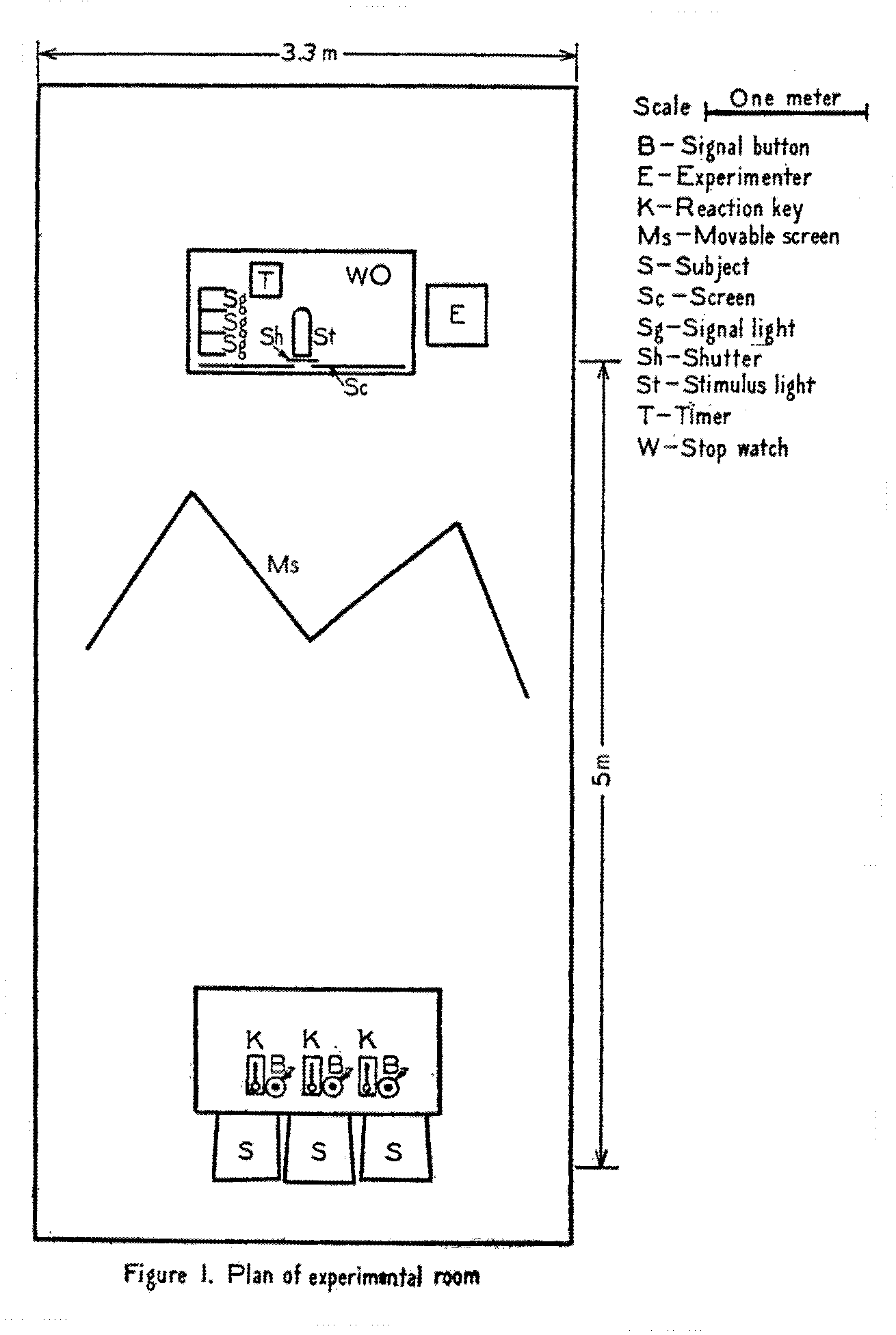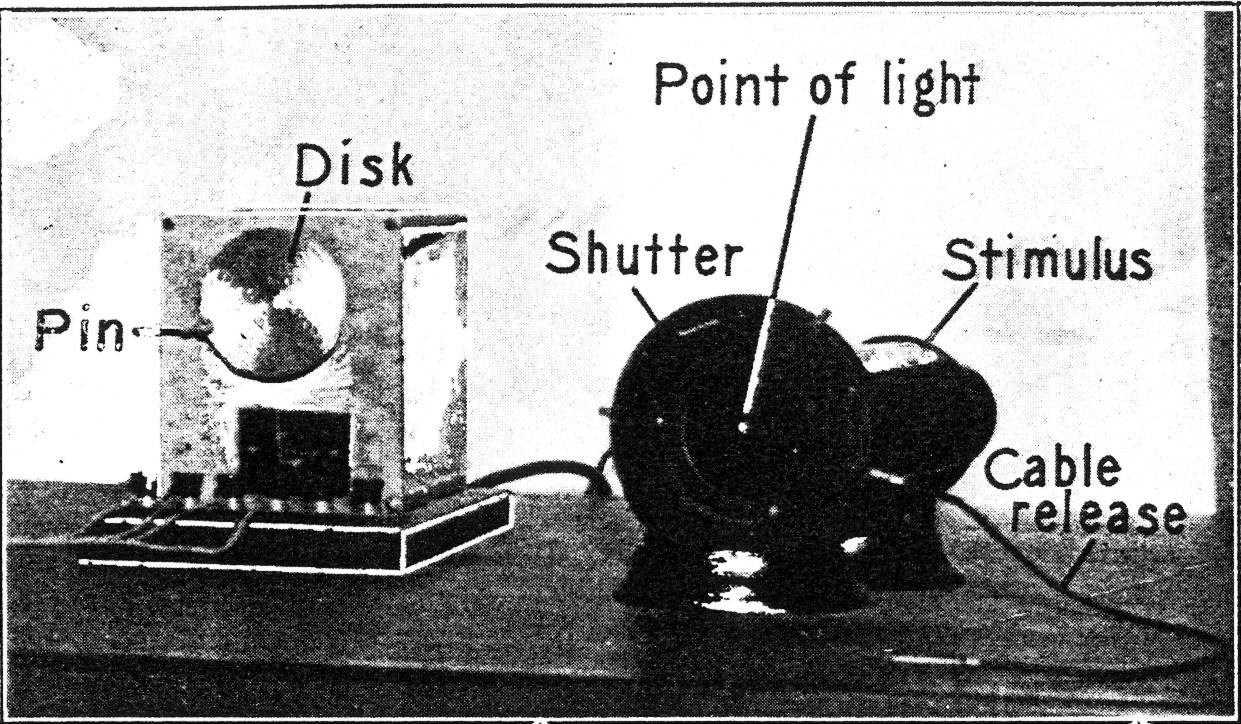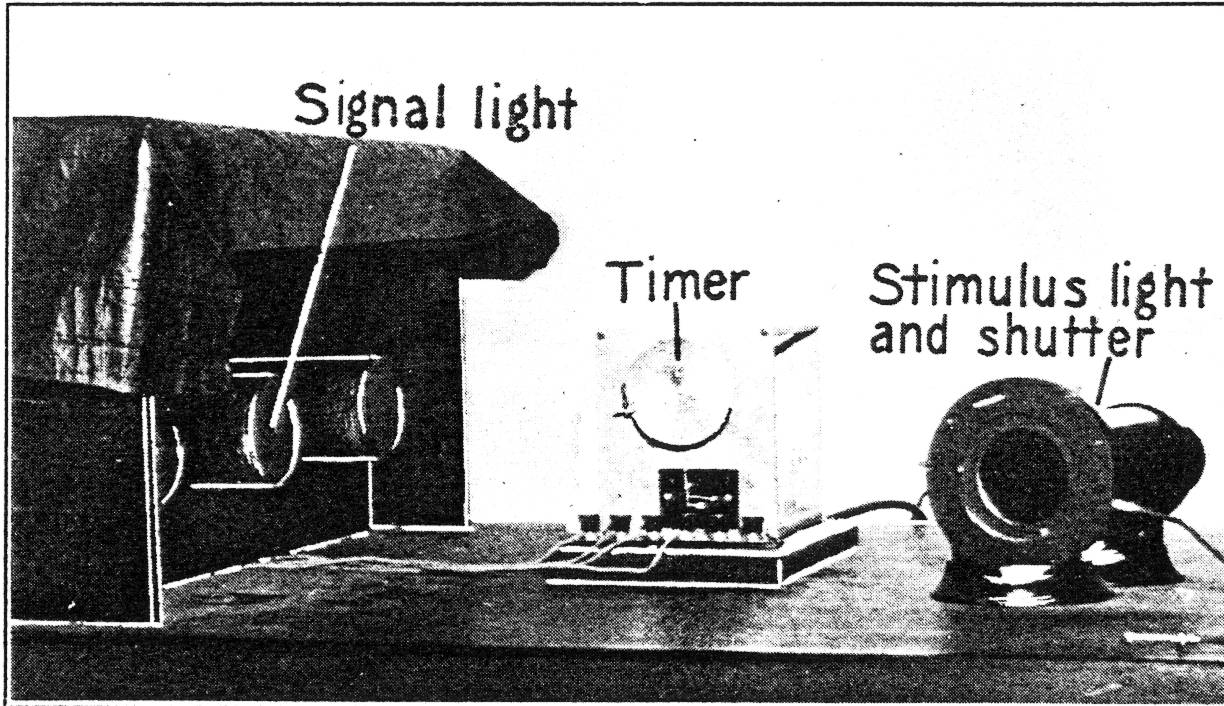A Study of Some Social Factors in Perception
Chapter 2
Table of Contents | Next | Previous
In our review of experimental data, it was seen that perception, judgment, and affectivity were relational matters, involving frames of reference. We also saw that psychological judgments may be made without the necessity of a formal standard stimulus in the experimental setting, because whether we formally introduce a standard stimulus or not, the subject experiences things in relation and thus establishes a scale, a level, or a frame of reference of his own.
We may now raise the problem: What will an individual do when he is placed in an objectively unstable situation in which all basis of comparison as far as the external field of stimulation is concerned is absent? What will the subject do when external reference points are eliminated? Will he give a hodge-podge of erratic judgments? Or will he establish his own points of reference? Consistent results in any direction under this situation may be taken as the index of a subjectively produced frame of reference.
What will a group of people do in the same unstable situation? Will it give a hodge-podge of judgments? Or will it establish its own frame of reference? Will it produce its own norm so as to perceive the unstable situation in some sort of order? If consistent effects are produced by such social factors as suggestion, and if the group establishes a standard or a reference point peculiar to itself, then we may say that we have at least the rudiments of the formation of a norm by a group.
With these considerations clearly in mind, our first task has been to find situations that can be structured this or that way by a definite subjective set. From among other possible experimental situations, we have preferred to use autokinetic movement and affectively neutral passages of prose. They meet our requirements. Autokinetic movement affords an especially good opportunity to test out the questions raised in the last paragraphs. In a dark room, when there is no objective basis of comparison, a single small light seems to move, and may seem to move in any direction. If you present the point of light repeatedly to a subject, he may see the light appearing at different places in the room each time—especially if
(18) the subject does not know the distance between himself and the light. The autokinetic effect can be obtained very easily. III a completely dark room a single point of light cannot be localized definitely at any place, because there is nothing in reference to which you can locate it. The effect appears even when the person looking at the light knows perfectly well that the light is not moving at all.
This is not a new phenomenon (1), nor is it a laboratory artifact,. It is older than experimental psychology. It was first reported by astronomers. Humboldt observed the phenomenon while looking at the stars from "a mountain peak 10,700 feet above sea level during the course of some investigations in Teneriffe." He thought, there were real movements. Through the contradictions in direction reported by the individuals facing such a light at the same time, Schweizer proved that it was not a physical movement. It was first called "Sternschwanken." Aubert (1887) coined the naine "autokinetic sensation" (Autokinetische Empfindung). Charpentier, Exner, Bourdon, Carr (8), and Adams (1) have reported studies on the autokinetic effects. It is described likewise by Külpe (25) and Sanford (36). Peterson (29), Guilford and Dallenbach (16), and Guilford (15) reported their studies. Their chief concern was to find the nature of autokinetic movement.
Autokinetic effect is not an artifact. It is produced whenever a stimulating object lacks a frame of reference. Several authors have advanced theories about the nature of the autokinetic effect. Among these we may mention the central theory (Gould and Aubert), the retinal theory (Exner—circles of action in the retina), eye-movement theory (Hoppe), eye-strain theory (Carr), and streaming theory (Carr, Guilford, and Dallenbach). The nature of the autokinetic movement is still a controversial problem. The nature of the autokinetic effect is immaterial for our purposes. But during long hours spent in taking the judgments of the subjects in the dark room certain facts came to our attention over and over again. On that basis it must be said that any adequate explanation of the nature of the autokinetic movement must take the following facts into account
1. The smaller and the fainter the light is, the more readily the "illusion" is produced (this fact is stated by early investigators) ;
2. The more uncertain the subject is about the distance between himself and the light the more readily the "illusion" is produced;
( 19)
3. The addition of one more light disturbs the illusion. If several visible objects are added, the illusion is destroyed, and there is stability in the field of stimulation ;
4. Noises and sounds in the neighborhood act as disturbing factors for the illusion-making any solely retinal or peripheral explanation improbable.
We have used the autokinetic effect in two ways to test out the questions raised on page 17.
(1) We have studied the extent of movement experienced by the observer under different conditions
(a) When alone;
(b) When in a group situation ;
(c) When brought into a group situation after being experimented upon when alone ;
(d) When experimented upon alone after being in a group situation.
(2) We have studied the effect of suggestion on the direction of movement experienced by the observer.
The first is designated as the range experiment and the second as the direction experiment.
APPARATUS
The experiments were carried on in a sound- and light-proof room. The general disposition of the apparatus is shown in the accompanying plan. (Figure 1.) The stimulus light was mounted on a table, 85 cm. from the floor at one end of the experimental room. The subjects were seated at the opposite end of the room, 5 meters from the stimulus light.
In order that the observers might get no idea about the source of light and the experimental set-up, there was always a large four-section screen between the observer and the light whenever the room was illuminated. The screen was pushed aside just after the room was completely darkened. Observers never saw the set-up around the stimulus light. This precaution was taken so as not to give any idea about a possible objective range for distance.
The essential parts of the apparatus were the stimulus light and the timing apparatus. (See Figures 1 and 2.)
The point of light (the stimulus light) was exposed through a tiny hole, 1 mm. in diameter, in one end of a tight metal box 7.5 cm. in diameter and 25 cm. long. The source of light was a small radio dial bulb burning at approximately normal brilliance on 2.5 volts
( 20)

 |
 |
| Figure 2. Above Apparatus for individual trails with screen removed. (Below )Apparatus for group experiments with screen removed. |
(21) supplied by a small transformer. Two thicknesses of tissue paper located 20 cm. from the bulb served to diffuse the light. A manually operated photographic shutter stood on the table immediately in front of the point of light and was operated by the experimenter by means of a long cable release.
The subject was instructed to press his reaction key as soon as he had seen the (autokinetic) movement (as will be noted in the description of the procedure later.) This set the disk of the timing device [1] in motion by releasing a magnetic catch. This disk was driven by a Telechron synchronous motor through a clutch. Normally it was held stationary and was arranged to make one complete revolution when released. An adjustable pin on the edge of the disk struck a small lever (giving a soft click) at a predetermined time (i.e., 2 seconds) following the reaction of the subject. The experimenter closed the shutter as soon as the timer had clicked.
In case no movement was seen within 30 seconds following the exposure of the light, the experimenter closed the shutter, and recorded the "distance" as zero. The 30 seconds' duration was determined by a stop-watch with luminous dial lying on the table in front of the experimenter.
In the group experiments the apparatus was the same, with the following necessary additions. In place of the single reaction key, three keys were mounted on the table 30 em. apart. The connections were so arranged that each key closed the circuit to the timing apparatus; thus the pressing of any one of the reaction keys would release the disk, so that the light disappeared 2 seconds later. The chairs for the subjects were set behind the table close to each other. On successive group sessions, the subjects took the same chairs.
To identify the subjects as they gave their individual judgments in complete darkness, a signal system was necessary. This consisted of push-buttons mounted beside each reaction key and connected with three colored signal lights (yellow, red, green, respectively), so concealed from the vision of the subjects by a partition as to be visible only to the experimenter. These signal lights were exceedingly dim, and of course made nothing in the room visible to the subjects while the experiment was going on.
Because of the fact that the autokinetic effect is produced more readily if the distance between the subject end the point of light is
( 22) not known, the comparatively long distance of 5 meters was used. Also because of the fact that the smaller the light the more quickly the "illusion" of movement is produced, a tiny hole of 1 mm. was chosen. These conditions are important, especially for group experiments, because if in different groups one member continually reports zero movement, while another presses the key to indicate the experience of movement, the stimulus-field is not unstable enough and hence not differentiating between subjective states of individuals in the group. The inspection of results shows that these difficulties were avoided in the experimental set-up.
SUBJECTS
The subjects in the range experiments were obtained through the employment offices of Columbia University, Teachers College and New York University. All the subjects in the autokinetic experiments were male undergraduate and graduate students, ages ranging between 19-30. Those were suitable who did not use eyeglasses and who had not majored in psychology. (If they knew anything about the autokinetic effect there was no point in using them.) We may say that they were psychologically naive subjects.
There were 19 subjects in the first range experiment, 4 in the second (intensive) range experiment, and 40 subjects in the group experiments. One hundred judgments were obtained from each subject in each experimental session. In the direction experiment (p. 43) there were 36 subjects (20, 6, 10).
The procedure will be described in connection with each specific experiment.